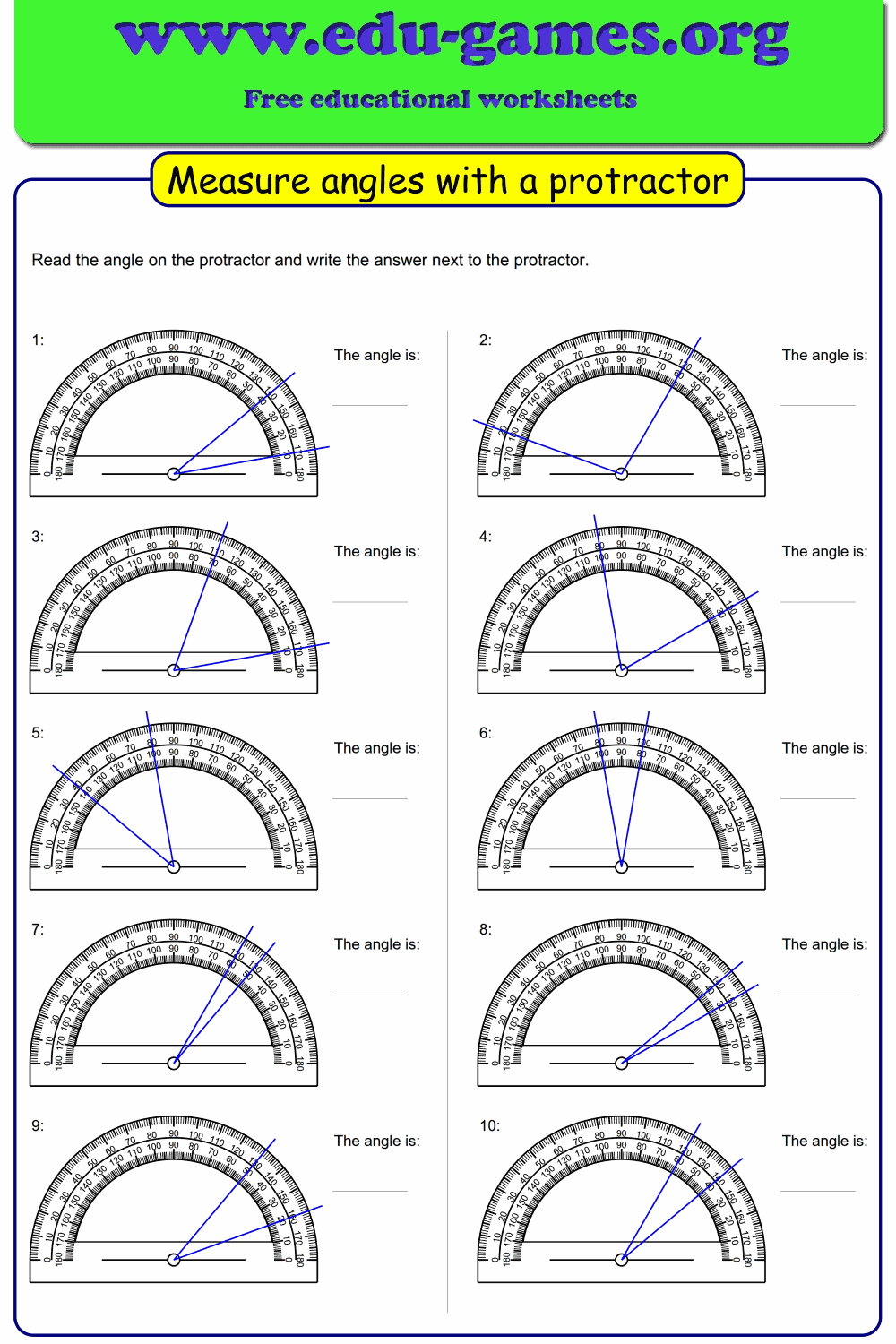

However, you must use a protractor to confirm your speculation on the exact angle. While measuring angles with a protractor, the kind of angle you want to measure should be apparent to the naked eye. Remember that you can classify angles as acute if they are less than 90 degrees and obtuse when they are above 90 degrees.
#Angle protractor how to
How to Use a Protractor to Measure Anglesīefore measuring angles with protractors, estimate the angle you are looking for and determine if it is an acute, obtuse, or right angle. Obtuse angles refer to angles greater than 90 degrees but less than 180 degrees. For example, an acute angle is greater than 0 degrees but less than 90 degrees. A right angle is a 90-degree angle with a squared appearance that takes the shape of a letter L.

Let them know what right, obtuse, acute, vertex, or arc angles are. How to Use a Protractor?īefore you get down to using a protractor, you must introduce popular definitions of angle measurements to students. The outer degree scale shows the clockwise rotation of the numbers from 0 to 180 from the left side of the semicircular degree scale. There are tiny line segments for every one degree (1), and there are more line segments of substantial size for every five (5) and ten degrees (10) in between.Īn inner degree scale shows the anticlockwise rotation of the numbers from 0 to 180 from the right side of the protractor. Each short line inside a semicircle represents a degree, and the total number of degrees is one hundred and eighty(180). When your child first handles a protractor, they may notice long and short lines. A vertical line cuts the baseline precisely at the protractor’s baseline so, a protractor’s origin is also called the center or midpoint. The origin of a protractor is a point where the baseline and the perpendicular line meet at the bottom. Since the baseline has two sides, they are called left and right-side baselines. A vertical line bisects the baseline of a protractor at its center point. The baseline of a protractor is a horizontal line at the bottom, also referred to as the reference point. Here are some of the essential components of a protractor: Baseline Start learning Math with Brighterly Let’s start learning Math! How to Read a Protractorīefore you can correctly read a protractor, you need to understand every part of the mathematical tool. Through hands-on activities, you can introduce a protractor to your child and have them note the numbers on the protractor and the way they move in clockwise and anticlockwise manners from 0 to 180 degrees. When children use a protractor, they solidify their knowledge of drawing, measurement, and even recognition of angles. You can also take readings from inside or outside the protractor. It comes with numbers on both sides of its body to give different values during measurement. A protractor is a semicircular tool that measures angles from 0 to 180 degrees. What Is a Protractor?Ī protractor is one of those mathematical instruments your child learns about while understanding shapes’ concepts and properties. But for many children, a protractor is a confusing semicircle with dashes and numbers, so they need detailed guidelines to learn how to use a protractor to measure and draw angles. They advance to measuring angles with the help of tools like a protractor. By the 4th grade, kids begin learning types of angles.


 0 kommentar(er)
0 kommentar(er)
